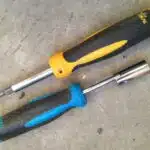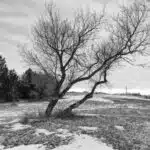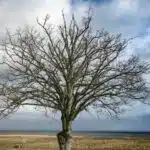Cabling is a critical aspect of tree care that helps protect trees from potential damage caused by harsh weather conditions or weak structural formation. The process involves using cables and braces to support the tree’s structure, preventing breakage or splitting due to external forces such as wind, snow, or ice. As an arborist or tree care specialist, it is essential to have adequate knowledge of cabling techniques to ensure the longevity and health of trees while ensuring safety for individuals and their property.
Cabling a tree involves several steps that must be followed precisely to ensure its effectiveness. Firstly, a thorough inspection of the tree’s structure must be carried out to identify weak points and determine where additional support is necessary. This inspection will inform the type of cable system required, whether it is dynamic or static. Once this has been determined, the installation process can begin, involving drilling holes into limbs and inserting bolts and cable systems into them. It is crucial to follow proper procedures during installation as any errors may compromise the structural integrity of the tree. In this article, we will explore how to cable a tree effectively and efficiently for optimal results in ensuring the longevity of your trees’ health while keeping them safe from potential hazards.
Understanding The Importance Of Cabling Trees
Once upon a time, tree health and structural stability were not considered crucial aspects of arboriculture. However, in modern times, these two factors have become pivotal to the longevity of trees and their surroundings. Tree cabling is one of the methods used to ensure that trees remain structurally sound and healthy for the long haul.
Cabling trees involves installing cables within or around a tree’s canopy to provide extra support to its branches and trunk. It is commonly used when a tree has defects or weaknesses that could cause it to break or split apart. The cables help redistribute weight and stress throughout the tree, preventing any further structural damage.
Maintaining good tree health is paramount when considering cabling as an option for tree care. A healthy tree will be better equipped to withstand adverse weather conditions such as strong winds, heavy snow, or ice storms. A properly cabled tree can also prevent property damage and personal injury that could result from falling branches or even entire trees. As such, it is essential to seek out professional arborists with experience in cabling trees to ensure a safe and successful outcome.
With an understanding of why cabling is important for maintaining healthy trees with structural stability, we can now move on to identifying which trees are in need of this treatment method.”
Identifying Trees In Need Of Cabling
When evaluating a tree’s structure, it is important to look for weak branches, branch unions, and any damaged branches. Additionally, assessing the crown-to-root ratio is important to determine if the tree is structurally sound. Inspecting the tree’s health requires looking for signs of disease or pest infestation, as well as any abnormal growth patterns. Finally, it is important to note any changes in the tree over time to help identify any potential problems that may arise.
Evaluating Tree Structure
When it comes to identifying trees in need of cabling, evaluating tree structure is a crucial step. Tree evaluation techniques involve assessing the overall health and strength of a tree, as well as identifying any structural weaknesses that may make it vulnerable to damage or collapse. As an arborist or tree care specialist, it is important to conduct a thorough evaluation before determining whether cabling is necessary.
One key aspect of evaluating tree structure is looking at the branching pattern of the tree. Trees with co-dominant stems or branches are particularly susceptible to failure under stress, such as during high winds or heavy snowfall. Other signs of weakness may include visible cracks in the trunk or branches, cavities or decay within the tree, and uneven weight distribution among branches. By carefully examining these factors, professionals can identify which trees are most at risk and determine appropriate measures for support.
Ultimately, effective tree cabling requires a deep understanding of how trees grow and interact with their environment. By staying up-to-date on the latest research and best practices in arboriculture, we can help ensure that trees remain healthy and strong for years to come. Whether you are a homeowner looking to protect your property or a professional working in the field, investing time and resources into evaluating tree structure is an essential step towards safeguarding our natural resources for future generations.
Inspecting Tree Health
In addition to evaluating tree structure, it’s also crucial to inspect the overall health of trees when identifying those in need of cabling. Trees that are diseased or weakened by pests are more susceptible to branch and stem failure, which can lead to property damage or even personal injury. As arborists and tree care specialists, we use various inspection techniques to assess tree health, including visual examination, soil analysis, and laboratory testing.
Preventative measures are key when it comes to maintaining healthy trees. By identifying potential issues early on and taking action to address them, we can minimize the risk of damage and prolong the lifespan of trees. This may include treatments for diseases or pests, pruning techniques that promote optimal growth and development, or installing support structures like cables or braces. Our goal is always to provide effective tree care that balances the needs of individual trees with broader considerations for ecosystem health.
At the end of the day, effective cabling requires a holistic approach that considers both structural integrity and overall health. By staying up-to-date on the latest research and best practices in arboriculture, we can ensure that our clients receive comprehensive care for their trees. Whether we’re working with homeowners or commercial property managers, our focus is always on creating safe, sustainable outdoor environments that benefit everyone in our communities.
Types Of Cable Systems
There are different types of cable systems available for stabilizing trees, each with their own advantages and disadvantages. Choosing the right system depends on several factors such as tree species, size, age, location, and degree of damage or disease. Tree care specialists must assess these factors before recommending a particular type of cable system.
The most common type of cable system used in tree care is the static cable system. This involves installing cables between branches or stems to provide support and reduce stress on weak or damaged parts of the tree. Static cables are typically made from steel wire rope or synthetic materials such as aramid fiber or polyester. Advantages of this system include its effectiveness in reducing risk of failure and improving tree stability. However, a disadvantage is that it may interfere with natural growth patterns and cause damage if not installed properly.
Another type of cable system is the dynamic cable system which uses flexible materials such as rubber or elastomeric components to allow for some movement in the tree. This allows the tree to respond to wind and other environmental factors while still providing support where needed. Advantages of this system include its ability to mimic natural movement and promote healthy growth, but a disadvantage is that it may not be suitable for all situations.
Choosing the right cable system for a tree requires careful consideration and professional expertise. Arborists must weigh the pros and cons of each type of system based on specific circumstances before making a recommendation. In the next section, we will discuss dynamic cable systems in more detail as an alternative option for stabilizing trees with greater flexibility than static systems offer.
Dynamic Cable Systems
Dynamic cable systems are a popular method of cabling trees that require additional support to prevent breakage or splitting. Unlike static cable systems, dynamic cables allow for some movement in the tree while still providing support. This is achieved through the use of flexible materials such as synthetic fibers or steel cables that are tensioned between branches and/or the trunk.
Benefits of dynamic cabling include increased structural stability, improved aesthetics, and extended tree life expectancy. The flexibility of dynamic cables allows for natural movement in the wind and reduces stress on the tree’s structure. This not only prevents breakage but also promotes healthy growth by allowing the tree to move naturally without being restricted by rigid supports. Additionally, dynamic cabling can be more visually appealing than static methods as it blends into the tree’s canopy.
Limitations of dynamic cabling include the need for regular inspection and maintenance, potential damage from friction between cables and bark, and difficulty in applying to certain species or structures. It is important to regularly inspect and adjust tension on dynamic cables as they can loosen over time. Friction from moving cables can also damage bark if not properly installed or maintained. Finally, some species may not be suitable for dynamic cabling due to their growth habits or structural weaknesses.
Moving forward into the next section about static cable systems, it is important to note that while both methods provide additional support to trees, each has its own advantages and limitations depending on the specific needs of the tree in question.
Static Cable Systems
Static Cable Systems are a popular method of tree cabling that utilizes steel cables to provide support and stability to trees. This method is used when a tree has structural defects or weaknesses that cause it to lean, split, or crack under heavy loads. The primary objective of static cable systems is to reduce the risk of branch failure and trunk splitting by distributing weight evenly across the tree’s canopy.
There are two types of cable tension commonly used in static cable systems: passive and active. Passive tension systems use cables that are pre-tensioned between branches without any additional hardware. Active tension systems use mechanical devices such as turnbuckles or bolts to apply tension to the cables. Both types of tension can be effective, but it is essential to consider factors such as tree species, size, age, and location before choosing which system to use.
The benefits of static cabling include increased safety for people and property near the tree, extending the life of the tree by reducing stress on weak areas, and maintaining the natural shape and beauty of the tree. However, it is essential to remember that cabling should only be done by trained professionals who understand how to assess a tree’s health and structural integrity accurately. Additionally, regular inspections must be done after installation to ensure that cables remain secure and do not damage healthy parts of the tree.
| PROS | CONS |
|---|---|
| Increased safety for people and property | Can be expensive |
| Maintain natural beauty of tree | Requires regular maintenance |
| Extends life of the tree | Not suitable for all trees |
Transitioning into the next section about materials needed for cabling, understanding different types of cable tension systems and their benefits is crucial in determining which materials are needed for a successful installation. While there are many factors to consider when choosing which materials to use for cabling a specific tree, knowing how they will function within different cable tension systems is critical when making informed decisions about materials.
Materials Needed For Cabling
To properly cable a tree, it is essential to have the necessary materials. There are various cable system options available for tree cabling, each with their own advantages and disadvantages. The most common types of cable systems used for tree support are static cables and dynamic cables.
Static cables are made from high-strength steel wire rope and are used to provide long-term structural support to a tree. They are placed under tension and installed between branches or stems that need additional support. Dynamic cables, on the other hand, are designed to absorb shock loads caused by wind or other external forces. They consist of a synthetic rope that stretches under load and then returns to its original length when the load is removed.
When selecting materials for cabling a tree, it is important to consider the cost of materials as well as their quality and durability. High-quality cables may cost more initially but will last longer and require less maintenance over time. It is also important to choose materials that are appropriate for the size and species of the tree being cabled.
To ensure the success of a cabling project, it is crucial to use high-quality materials that are appropriate for the specific needs of the tree. By carefully considering cable system options and weighing the cost of materials against their quality and durability, arborists can select the best materials for each unique situation. In order to properly install these materials, certain tools will also be required which we will discuss in our subsequent section about ‘tools required for cabling’.
Tools Required For Cabling
As a tree care specialist, I know that cabling trees is an essential process in ensuring their stability and longevity. However, it is important to note that cabling should only be done when necessary and by a professional arborist. Before starting the cabling process, one must have the right tools to ensure that the job is done correctly.
One of the most critical tools required for cabling is a cable tension gauge. This tool helps determine the correct amount of tension needed for each cable installed on the tree. Without this tool, there is a high risk of over-tensioning or under-tensioning cables, which can lead to tree failure or damage. Another crucial tool required for cabling trees are high-quality cable connectors. These connectors help secure cables to the trunk and branches of trees while ensuring they are not damaged during installation.
When it comes to installing cables on trees, safety should always be a top priority. That’s why it’s essential to have appropriate personal protective equipment (PPE) such as gloves, safety glasses, and helmets. Additionally, one must ensure all equipment is in good working condition before starting work on any tree.
In preparing for the cabling process, it’s crucial to identify where cables will be installed on the tree and determine which type of cable system will work best for its unique structure. Proper identification ensures that no harm or damage comes to trees during installation while also allowing us arborists to provide excellent service to our clients’ satisfaction.
Preparing For The Cabling Process
Selecting cables for a tree cabling process is an essential step that should not be overlooked. It is important to choose the right type of cable and size according to the tree’s needs. Arborists typically use two types of cables, namely steel and synthetic. Steel cables are highly durable and can withstand harsh weather conditions, but they may damage trees if not installed correctly. Synthetic cables, on the other hand, are easier to install and do not harm trees.
Proper tree assessment is crucial before any cabling process begins. The arborist must examine the tree’s structure and determine which branches require support. Trees with multiple stems or those with weak branch unions may benefit from cabling. The arborist must also consider the size of the branches that need support as this will determine the cable’s strength requirements.
Before drilling holes in limbs for cabling installation, it is important to ensure that all necessary preparations have been made. This includes selecting appropriate cables, conducting a thorough tree assessment, and determining the correct locations for drilling holes in limbs. By taking these steps seriously, arborists can provide effective support to trees that need it while minimizing any potential damage caused by incorrect installation techniques.
Drilling Holes In Limbs
Metaphorically speaking, drilling holes in limbs is like performing surgery on a tree. It requires precision, skill, and knowledge of the tree’s anatomy to ensure the tree’s health and longevity. As an arborist or tree care specialist, it is essential to understand the proper techniques for drilling holes in limbs.
Choosing the right drill is crucial when drilling holes in limbs. It is recommended to use a low-speed drill with a sharp bit that matches the diameter of the cable or bolt being used. Using a dull or incorrect size bit can result in damage to the limb and increase the risk of disease or pest infestations. Additionally, it is important to avoid using impact drills as they can cause too much vibration, leading to potential harm to the tree.
Safety precautions during drilling cannot be emphasized enough. Before starting, ensure that there are no electrical wires or other hazards present near the area of drilling. Always wear appropriate personal protective equipment (PPE), including eye protection and gloves, and secure yourself with a harness if working at heights. It is also crucial to inspect limbs thoroughly for signs of decay or weakness before drilling; weak limbs may not withstand the pressure applied by cables or bolts.
To properly insert bolts and cable systems into drilled holes, it is necessary to understand the load-bearing capacity of each limb and select appropriate hardware accordingly. In addition, cables should be installed with proper tensioning techniques to provide stability without causing damage over time. By following these guidelines for drilling holes in limbs and inserting hardware correctly, we can help ensure trees’ health while providing structural support for optimal growth.
Inserting Bolts And Cable Systems
Cabling a tree can be an effective way to reduce the risk of failure. This can prove especially useful for large trees that may have structural defects or other issues. Benefits of cabling include providing additional support to prevent limb breakage and reducing the risk of damage to property, vehicles, or people. Additionally, cabling systems can help preserve the overall health of a tree by reducing stress on weak areas.
However, improper cabling can pose significant risks to both the tree and individuals who may come into contact with it. Risks of improper cabling include causing further damage to weakened areas, increasing the likelihood of failure during inclement weather, and potentially injuring people or damaging property. It’s essential to ensure that the appropriate type of cable system is chosen for each situation and installed correctly.
Securing cables properly is critical in ensuring their effectiveness. This involves choosing quality hardware such as bolts that are appropriately sized for the tree’s diameter and species. Cables should be placed at least two-thirds up the branch being supported and should not be over-tensioned, as this can cause more harm than good. Properly installed cables should last for years without requiring additional adjustments or maintenance.
Securing Cables Properly
After the bolts are inserted, and the cable systems are in place, it’s time to cable the tree. This is a crucial step that requires a careful approach to ensure the proper tension and cable length. It’s not something that can be done haphazardly or with a “good enough” attitude.
First, determine the appropriate length of cable needed for each specific application. Factors such as tree species, size, and location should be taken into account when determining how much cable is needed. Once you have determined the correct length, it’s important to make sure that you use the appropriate type of cable for your application.
Secondly, proper tension must be applied to ensure that the cables do not break or become loose over time. Cables that are too tight can damage the tree while cables that are too loose will not provide adequate support. Arborists must find a balance between these two extremes by applying just enough tension to keep everything in place.
In conclusion, cabling a tree is an essential part of ensuring its health and longevity. Proper tension and cable length are critical factors in making sure that your work lasts for years to come. After installation, it’s important to conduct regular inspections to ensure that everything remains secure and intact- which we will discuss in our next section about post-installation inspection.
Post-Installation Inspection
Once a tree has been cabled, it is essential to conduct a post-installation inspection to ensure that the system is properly installed and functioning. This inspection should be conducted by a professional arborist or tree care specialist who has experience in cabling trees. The purpose of this inspection is to ensure stability and longevity of the cable system.
During the post-installation inspection, the arborist will check the integrity of the cable and all attachment points. They will also inspect the branches that have been cabled to ensure that they are not rubbing against each other or causing damage to the trunk. Additionally, they will evaluate the overall health of the tree and determine if any additional measures need to be taken.
To ensure that your cabled tree remains stable over time, there are several best practices that you can follow. These include regularly monitoring your tree for signs of stress or damage, avoiding excessive pruning or removal of limbs that have been cabled, and working with a trained professional to perform routine maintenance on your cable system. By following these guidelines, you can help ensure that your cabled tree remains healthy and secure for years to come.
Maintenance of Cabled Trees
Maintenance Of Cabled Trees
Symbolically speaking, trees are like living beings that require constant care and attention to thrive. As an arborist, one of the most important aspects of maintaining a tree’s health is cabling it. Cabling is a process in which cables are installed in the crown of a tree to provide structural support to weak branches or limbs. This helps prevent potential damages caused by high winds or heavy snow.
When cabling a tree, it’s essential to consider cable tension as it plays a crucial role in the success of the operation. The goal is to achieve just enough tension on the cable to stabilize the weak branch without causing any damage to other parts of the tree. Over-tensioning can lead to restricted tree growth patterns and even breakage, while under-tensioning won’t provide adequate support and can increase the risk of failure during severe weather conditions.
Tree growth patterns must also be taken into account when cabling a tree, as they determine where cables should be placed for optimal stability. Horizontal branches with V-shaped junctions tend to have weaker attachments than those with U-shaped junctions, making them more susceptible to breakage during high winds or heavy snowfall. Properly placed cables can help reduce stress on these weaker areas and prevent them from splitting or breaking under pressure.
Table: Emotional impact of cabling trees
| Emotion | Positive | Negative |
|---|---|---|
| Safety | Provides structural support for weak branches | Over-tensioning can cause damage |
| Preservation | Prevents potential damages from high winds or heavy snow | Improper installation can harm trees |
| Responsibility | Ensuring proper care and maintenance for trees | Untrained individuals attempting cabling operations |
In essence, proper cabling techniques are crucial for maintaining healthy trees that contribute positively to our surroundings. However, it’s important not to overlook common mistakes during this process that may result in significant consequences. In the subsequent section, we will discuss common mistakes to avoid when cabling a tree to ensure the best possible outcome for both the tree and its surrounding environment.
Common Mistakes To Avoid
When cabling a tree, there are some common mistakes that you should avoid. One of the most crucial mistakes is poor placement of cables. Cables should be placed in a way that they can support the weight of the branches without causing any damage to the tree. Improper placement of cables can cause more harm than good and may lead to structural problems in the long run.
Another common mistake when cabling a tree is incorrect tension. The cables should be properly tightened and secured to ensure maximum support for the branches. Incorrect tension can cause problems such as overloading, which may lead to failure of the system. It’s important to note that different trees require different cable tensions and proper knowledge on this is essential for successful cabling.
To ensure successful cabling, it’s vital to use proper equipment and conduct thorough inspection of the tree before starting any work. Proper equipment includes high-quality cables, bolts, nuts, and washers that are suitable for your specific type of tree. A thorough inspection helps identify areas that require cabling and determine what type of cabling system will work best. Inspections also help identify any underlying issues with the tree that may affect its stability in the future.
- Tips for Successful Cabling:
- Use high-quality equipment suitable for your specific type of tree.
- Conduct a thorough inspection before starting any work.
- Ensure proper cable tension based on your specific type of tree.
To avoid potential damage or injury when cabling a tree, it’s important to hire a professional arborist with experience in cabling services. Arborists have the expertise needed to assess your tree’s condition, decide whether it requires cabling or not, and recommend suitable systems based on its needs. Hiring an arborist ensures that your trees receive proper care while minimizing any potential risks associated with DIY or inexperienced cabling services.
Hiring A Professional Arborist For Cabling Services
Cabling trees is a specialized task that requires proper knowledge and skills to ensure success. It is important to understand that cabling is not a DIY task, nor should it be attempted by an inexperienced individual. Instead, it is advisable to hire a professional arborist for cabling services. By doing so, you can benefit from their expertise and enjoy peace of mind knowing that your tree is in good hands.
One of the benefits of hiring a professional arborist for cabling services is that they have the necessary equipment and tools required for the job. Cabling involves installing cables or rods in trees to provide additional support and prevent them from splitting or falling over during high winds or storms. A professional arborist will evaluate your tree’s structural integrity and recommend the right type of cabling system needed to provide adequate support. They will also use specialized equipment such as cable cutters, swaging tools, and thimbles to install the cables or rods correctly.
Costs associated with hiring a professional arborist for cabling services vary depending on various factors such as the size of your tree, location, and complexity of the job. However, it’s essential to keep in mind that attempting to cable your tree on your own could result in more significant expenses due to mistakes made during installation or damage caused by improper techniques. Therefore, finding and evaluating experienced professionals can help you save money in the long run while ensuring your tree remains healthy and safe.
In conclusion, hiring a professional arborist for cabling services offers many benefits such as access to specialized equipment, expert recommendations on cabling systems, and peace of mind knowing your tree is in good hands. Additionally, finding and evaluating experienced professionals saves you money in the long term while guaranteeing that your trees remain healthy and safe for years to come.
Conclusion
Cabling a tree is a fundamental technique used by arborists to protect trees from harm caused by high winds, heavy rainfall, and snow loads. This process involves installing cables between the branches of a tree to redistribute its weight and prevent splitting or breakage. It is crucial to identify trees in need of cabling and choose the right type of cable system depending on the tree’s size, species, and condition.
Dynamic cable systems are suitable for younger trees with flexible branches, while static cable systems work best for mature trees with more rigid branches. After installation, it is essential to conduct regular inspections and maintenance to ensure that the cables are functioning correctly. Common mistakes like using incorrect materials or installing cables too tightly can cause more damage than good.
In conclusion, cabling a tree requires knowledge, experience, and expertise in tree care. As an arborist or tree care specialist, it is our responsibility to protect the health and safety of our clients’ trees while preserving their natural beauty. By understanding the importance of cabling trees, identifying trees in need of cabling, choosing the right type of cable system, conducting post-installation inspection and maintenance; we can help prevent potential damage caused by extreme weather conditions. So ask yourself this question: Do you want your beloved trees to withstand harsh weather conditions? If yes, then consider hiring a professional arborist for cabling services today!
Image Credits





























